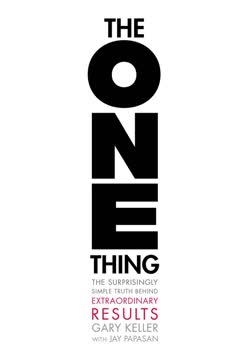重点摘要
1. 你的个人品牌是你的独特身份和专业知识
《你就是品牌》是一本关于围绕你的想法、专业知识、声誉和个性建立业务的书——通过建立关系。
你的品牌就是你。 个人品牌业务让你可以将独特的技能、经验和个性组合变现。与企业品牌不同,你不能简单地制造一个形象——它必须真实地反映你是谁。专注于以建立真实关系的方式发展和展示你的专业知识。你的独特视角和方法将最终使你与众不同。
真实性是关键。 避免试图展示一个虚假的形象或过度分享以显得真实。相反,谨慎地分享与你的专业知识相关的方面,以建立信任。你的目标应该是创造一个温暖、吸引人的“篝火”,吸引合适的人聚集在你的品牌周围。
2. 发展明确的观点以在市场中脱颖而出
如果你要基于自己的身份开始一项业务,不妨基于你热爱的东西。
明确你的观点。 要发展一个引人注目的观点,问自己三个关键问题:
- 什么让你生气?(你看到的不公)
- 什么让你心碎?(你感受到的同情)
- 你试图解决的重大问题是什么?(你业务的目的)
这三个元素的交集构成了你独特视角的基础。大胆分享你的立场。 不要害怕表达强烈的意见——这将使你脱颖而出。然而,确保你的观点源于对观众的真正关心和解决实际问题的愿望。
3. 使用个人故事创造联系和差异化
个人故事让你能够做到这一点。我迄今为止与你分享的个人故事为你提供了我为什么写这本书以及我对工作充满热情的背景。
打造引人入胜的叙述。 发展三种关键类型的故事:
- 创始人故事:你为什么开始你的业务
- 业务故事:你正在解决的问题
- 客户故事:你如何帮助客户转变
故事创造背景和联系。 精心制作的个人故事帮助潜在客户理解你的动机和专业知识,同时将你与竞争对手区分开来。专注于关键时刻和学到的教训,而不是你的整个生活故事。在营销中战略性地使用故事来说明关键点并建立融洽关系。
4. 随时间战略性地建立你的平台
成功是循序渐进的,而不是同时发生的。
一次专注于一个平台。 而不是试图同时出现在所有地方,随着时间的推移战略性地在关键平台上建立你的存在。例如:
- 第一年:博客
- 第二年:播客
- 第三年:团体辅导
- 第四年:产品发布
- 第五年:现场活动
一致性会累积。 通过一次专注于掌握一个平台,你将发展有价值的技能并积累动力。这种方法允许你创造高质量的内容,有机地增长你的观众,并避免倦怠。记住,建立一个强大的品牌需要时间——要有耐心和坚持。
5. 相对于竞争对手定位自己
你必须始终知道你的竞争对手是谁。
绘制你的市场。 创建一个定位图,使用两个关键变量(例如,战略与战术,初学者与专家)来可视化你相对于竞争对手的位置。这个练习有助于明确你的独特价值主张并识别你的直接竞争对手。
战略性地差异化。 一旦你了解了你的定位,利用你的观点和个人故事来脱颖而出。考虑:
- 你不能提供而其他人可以提供的是什么?
- 你带来了什么独特的技能/经验组合?
- 你的方法与他人有何不同?
清楚地传达你的不同之处,以吸引合适的客户并避免直接竞争。
6. 创建和验证解决实际问题的产品
业务无非是为利润解决问题。
专注于切实的结果。 在开发产品或服务时,确保它们帮助人们获得或节省:
- 时间
- 金钱
- 技能
在创建之前验证。 遵循以下流程以确保市场需求:
- 验证关键问题和期望结果
- 创建一个测试你的解决方案的测试组
- 根据反馈进行改进
- 重新推出改进后的产品
这种方法将风险降到最低,并确保你创建的产品是人们真正想要并愿意付费的。
7. 基于价值定价并战略性地提高价格
收取你应得的费用,然后再加20%。
使用基于价值的定价。 考虑客户的感知价值,而不仅仅是你的时间或成本。利用9-Box方法创建定价选项:
- 好、较好、最佳服务级别
- 最低、常规、意外之财定价层次
谨慎地提高价格。 在提高价格时:
- 对于新客户:简单地设定新的基准价格
- 对于现有客户:清楚地传达增加,强调增加的价值并提前通知
记住,随着你的技能和结果的提高,你应该得到相应的报酬。
8. 制作针对认知水平的引人入胜的推销
最有效的营销策略就是简单地说实话。
了解认知水平。 根据潜在客户的熟悉程度调整你的推销:
- 不知情:讲故事
- 问题知情:分享秘密
- 解决方案知情:重述问题/解决方案
- 产品知情:做出承诺
- 已知情:直接提供
使用经过验证的结构。 对于销售电话,遵循以下大纲:
- 设置议程
- 询问他们的挑战
- 询问过去解决的尝试
- 提出你的解决方案
- 回答问题
- 结束或设定下一步
始终专注于建立信任和提供价值,而不仅仅是完成销售。
9. 利用合作伙伴关系加速增长
关系是火箭。
成为有价值的案例研究。 建立与影响者关系的最快方法之一是成为他们最成功的案例。实施他们的教学,分享结果,并寻找方法为他们的目标做出贡献(宣传或利润)。
投资于独家机会。 参与高水平的智囊团、辅导计划或活动,以同时建立你的网络和技能。这些联系可以带来有价值的合作伙伴关系和合作机会。
贡献你的技能。 寻找方法将你的专业知识提供给潜在合作伙伴,将自己定位为合作者而非竞争者。这种方法可以打开通往有影响力的关系和增长机会的大门。
最后更新日期:
FAQ
What's "You Are The Brand" about?
- Personal Branding Focus: "You Are The Brand" by Mike Kim is a guide to building a personal brand that showcases your unique expertise and creates a profitable and fulfilling business.
- 8-Step Blueprint: The book outlines an 8-step blueprint to help individuals develop their personal brand, covering everything from identifying your point of view to creating products and partnerships.
- Authenticity and Integrity: It emphasizes the importance of authenticity and integrity in personal branding, challenging readers to be genuine in their marketing efforts.
- Practical Advice: The book provides practical advice and real-world examples to help readers navigate the often complex world of personal branding.
Why should I read "You Are The Brand"?
- Comprehensive Guide: It offers a comprehensive guide to building a personal brand, making it suitable for both beginners and those looking to refine their existing brand.
- Actionable Steps: The book is filled with actionable steps and exercises that readers can implement immediately to start building their brand.
- Real-Life Examples: Mike Kim shares real-life examples and stories, making the concepts relatable and easier to understand.
- Expert Insights: With endorsements from industry leaders, the book provides insights from someone who has successfully navigated the personal branding space.
What are the key takeaways of "You Are The Brand"?
- You Are the Brand: The central idea is that you are your brand, and your personal story, expertise, and personality are what make you unique.
- 8-Step Blueprint: The book provides an 8-step blueprint for building a personal brand, including defining your point of view, creating personal stories, and developing products.
- Authenticity Matters: Authenticity and integrity are crucial in personal branding, and the book emphasizes being genuine in your marketing efforts.
- Relationships Are Key: Building relationships is essential for personal branding success, and the book offers strategies for partnering with others to grow your brand.
What is the 8-Step Blueprint in "You Are The Brand"?
- Point of View: Establish a clear point of view that cuts through the noise and stems from your core beliefs and passions.
- Personal Stories: Use personal stories to create connections and differentiate yourself from the competition.
- Platform: Build a platform for your brand, such as a blog, podcast, or social media channel, to share your message.
- Positioning: Determine your positioning relative to competitors and ensure your brand's visual, verbal, and value identities are aligned.
How does Mike Kim define personal branding in "You Are The Brand"?
- Identity Focus: Personal branding is about crafting a public identity that includes your ideas, expertise, reputation, and personality.
- Authenticity and Integrity: It involves being authentic and maintaining integrity in how you present yourself to the world.
- Relationship Building: Personal branding is about opening relationships, not just closing sales, and connecting with your audience on a deeper level.
- Unique Selling Proposition: Your personal stories and experiences are your unique selling proposition, setting you apart from others.
What are the best quotes from "You Are The Brand" and what do they mean?
- "Marketing isn’t about closing a sale; it’s about opening a relationship.": This quote emphasizes the importance of building genuine connections with your audience rather than focusing solely on sales.
- "Success is sequential, not simultaneous.": This highlights the idea that building a brand takes time and should be approached step by step.
- "You are the brand.": The core message of the book, reminding readers that their personal story and expertise are what make their brand unique.
- "Life is too short for the wrong career.": Encourages readers to pursue a career that aligns with their passions and values.
How does "You Are The Brand" suggest identifying your unique expertise?
- Inventory of Skills: Take inventory of your skills and experiences to see yourself in a new light and identify your unique expertise.
- Self-Talk Mantras: Use self-talk mantras to reinforce your identity, such as "I am a teacher" or "I am a marketer."
- Rebranding to Yourself: Rebrand yourself to yourself by changing the story you tell yourself about your skills and potential.
- Focus on Core Skills: Identify core skills that you can build a business around, such as teaching, speaking, or writing.
What is the "PB3" framework in "You Are The Brand"?
- What Pisses You Off?: Identify the injustices or problems in the world that you are passionate about solving.
- What Breaks Your Heart?: Determine the issues or causes that you feel deeply compassionate about.
- Big Problem to Solve: Define the big problem you want your business to solve, which will guide your brand's purpose and direction.
- Intersection of Three: The intersection of these three questions helps establish your point of view and brand message.
How does "You Are The Brand" recommend building a platform?
- Home Base Ownership: Own your online home base, such as a website or email list, to ensure you have control over your brand.
- Sequential Focus: Focus on building one key area of your platform per year, such as blogging, podcasting, or video.
- Multiple Entry Points: Create multiple entry points for people to encounter your brand, like social media, podcasts, or speaking engagements.
- Consistent Content: Consistently create and share content that aligns with your brand message and engages your audience.
What strategies does "You Are The Brand" offer for positioning your brand?
- Identify Competitors: Know who your competitors are and how you compare to them in the market.
- Leverage Smallness: Use your "smallness" as a competitive advantage by offering a personal touch that larger brands can't.
- Align Sub-Identities: Ensure your brand's visual, verbal, and value identities are aligned for a cohesive brand image.
- Differentiate with Stories: Use your personal stories and point of view to differentiate yourself from competitors.
How does "You Are The Brand" suggest pricing your products or services?
- Value-Based Pricing: Use value-based pricing to set prices based on the perceived value to the customer rather than just time or cost.
- Traffic from Hell Principle: Determine your hourly rate by considering what you'd need to be paid to endure a difficult commute.
- Pricing Tiers: Establish pricing tiers for products, with different levels of service or value offered at each tier.
- Add 20% Rule: Charge what you think you're worth, then add 20% to account for unforeseen challenges and to value your expertise.
What is the role of partnerships in "You Are The Brand"?
- Relationships as Rocket Ships: Building relationships with partners can significantly accelerate your brand's growth and reach.
- Partner Up and Collaborate: Partner with those above you, collaborate with peers, and mentor those around you to expand your network.
- Contribute Skills: Offer your skills to potential partners to build relationships and demonstrate your value.
- Epic Breakfast Strategy: Host small, invite-only meetups to build rapport and create meaningful connections with others in your industry.
评论
你就是品牌由Mike Kim撰写,获得了压倒性的好评,读者称赞其在个人品牌和营销方面提供了实用且可操作的建议。许多人欣赏Kim朴实的写作风格、贴近生活的经历以及清晰的分步骤指导。读者认为这本书既鼓舞人心又信息丰富,易于理解,为企业家、教练和小企业主提供了宝贵的见解。有些人特别指出书中对真实性和价值导向品牌的强调。尽管有少数人认为内容并不具有突破性,但大多数人一致认为这对于那些希望建立或改善个人品牌的人来说是一个极好的资源。
Similar Books












